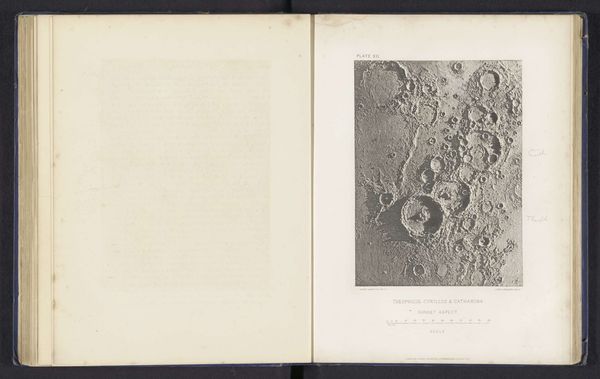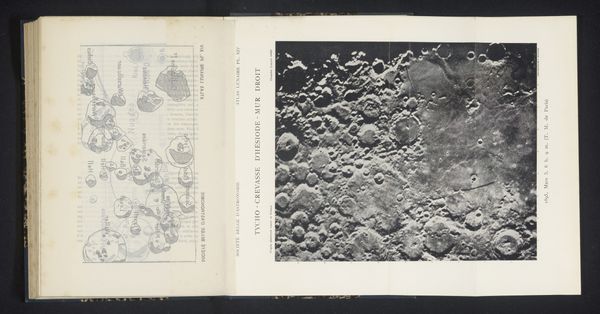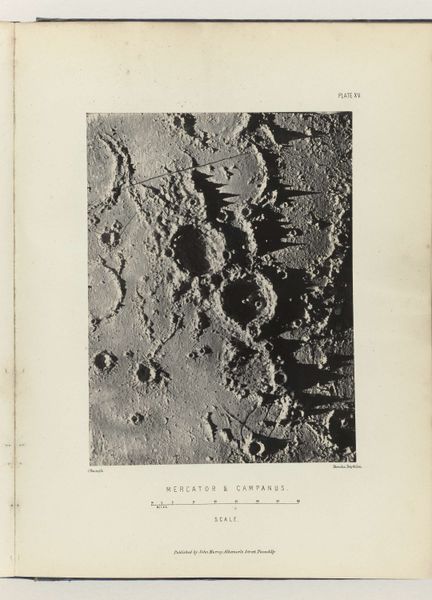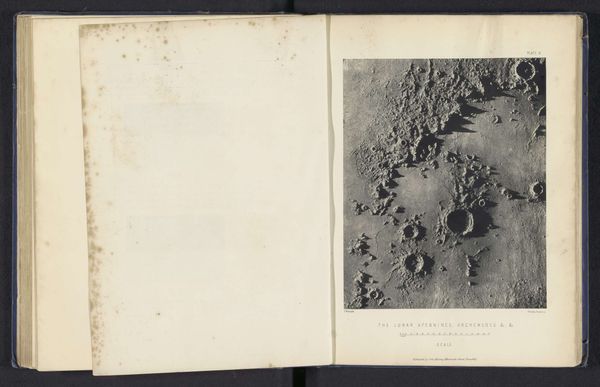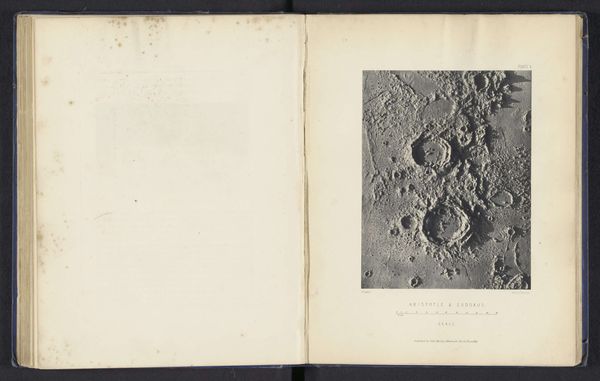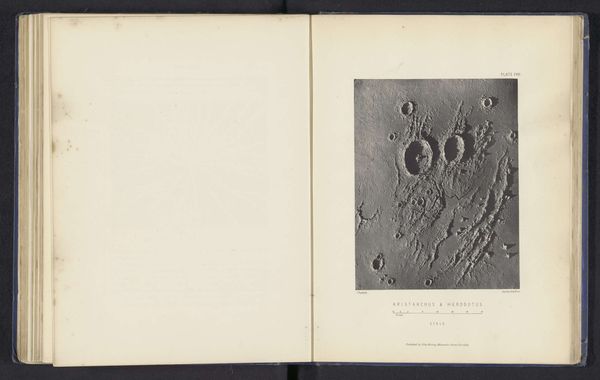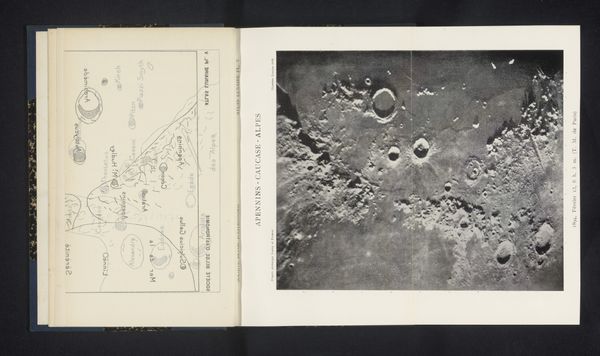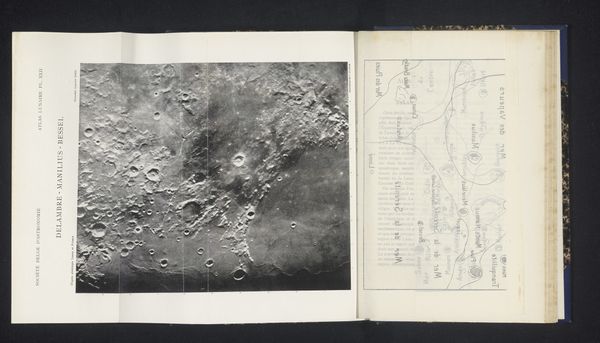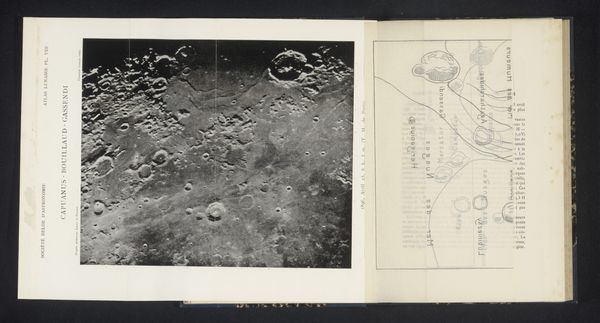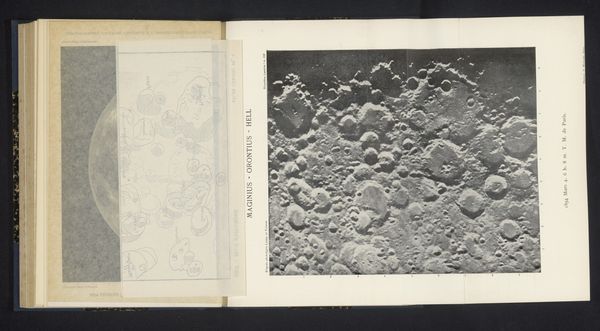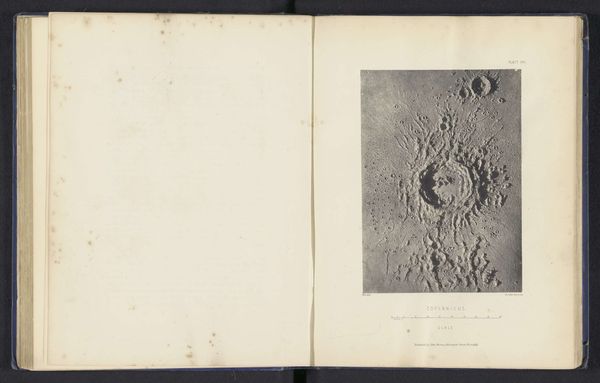
Gezicht op Owens College in Manchester, de voorloper van de University of Manchester before 1878
0:00
0:00
print, engraving
# print
#
landscape
#
geometric
#
engraving
Dimensions: height 118 mm, width 194 mm
Copyright: Rijks Museum: Open Domain
This is a photograph of Plato crater, a lunar plain, captured by Alfred Brothers. Dominating the frame is a large, circular crater, reminiscent of ancient amphitheaters where dramas of human fate unfolded. These formations evoke the cyclical nature of destruction and rebirth. Think of the Ouroboros, the snake eating its tail, an ancient symbol representing the eternal return, a concept deeply embedded in human consciousness. In another sense, the moon, the ever-changing presence in our sky, has been an icon for the passage of time, its phases mirroring human life, and its cyclical nature has found its way into art and myth. The surface is scarred and broken, echoing the ruins of past civilizations, yet these "wounds" also tell tales of resilience, echoing our collective memory of human resilience in the face of devastation. This triggers something primal, something deep within our psyche, reminding us of our mortality and the enduring power of nature. Through a photograph, it evokes a profound emotional response, speaking to the primal aspects of human experience.
Comments
No comments
Be the first to comment and join the conversation on the ultimate creative platform.
